Weiqin Wang
Ranked Voting based Self-Consistency of Large Language Models
May 16, 2025Abstract:Majority voting is considered an effective method to enhance chain-of-thought reasoning, as it selects the answer with the highest "self-consistency" among different reasoning paths (Wang et al., 2023). However, previous chain-of-thought reasoning methods typically generate only a single answer in each trial, thereby ignoring the possibility of other potential answers. As a result, these alternative answers are often overlooked in subsequent voting processes. In this work, we propose to generate ranked answers in each reasoning process and conduct ranked voting among multiple ranked answers from different responses, thereby making the overall self-consistency more reliable. Specifically, we use three ranked voting methods: Instant-runoff voting, Borda count voting, and mean reciprocal rank voting. We validate our methods on six datasets, including three multiple-choice and three open-ended question-answering tasks, using both advanced open-source and closed-source large language models. Extensive experimental results indicate that our proposed method outperforms the baselines, showcasing the potential of leveraging the information of ranked answers and using ranked voting to improve reasoning performance. The code is available at https://github.com/szu-tera/RankedVotingSC.
SkiM: Skipping Memory LSTM for Low-Latency Real-Time Continuous Speech Separation
Feb 10, 2022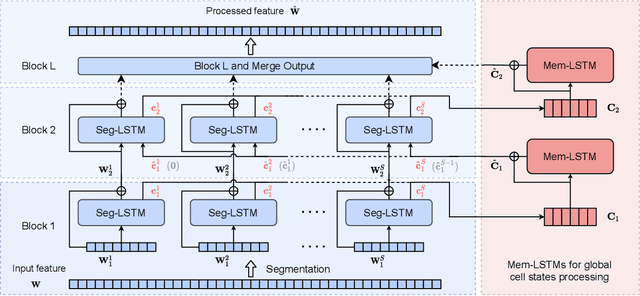
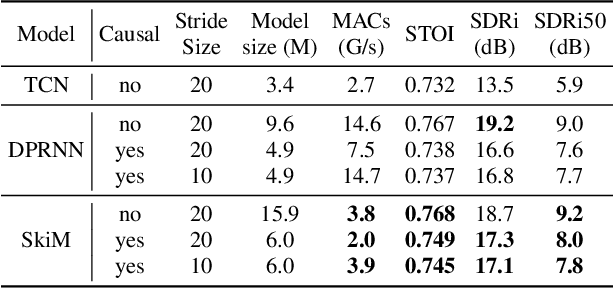
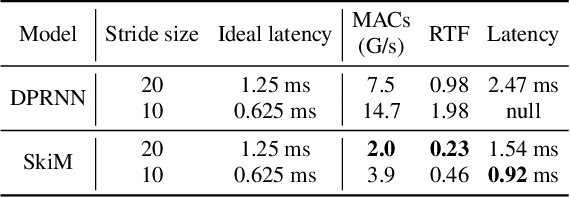
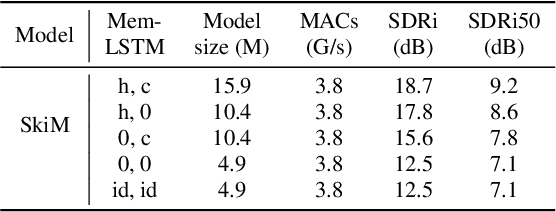
Abstract:Continuous speech separation for meeting pre-processing has recently become a focused research topic. Compared to the data in utterance-level speech separation, the meeting-style audio stream lasts longer, has an uncertain number of speakers. We adopt the time-domain speech separation method and the recently proposed Graph-PIT to build a super low-latency online speech separation model, which is very important for the real application. The low-latency time-domain encoder with a small stride leads to an extremely long feature sequence. We proposed a simple yet efficient model named Skipping Memory (SkiM) for the long sequence modeling. Experimental results show that SkiM achieves on par or even better separation performance than DPRNN. Meanwhile, the computational cost of SkiM is reduced by 75% compared to DPRNN. The strong long sequence modeling capability and low computational cost make SkiM a suitable model for online CSS applications. Our fastest real-time model gets 17.1 dB signal-to-distortion (SDR) improvement with less than 1-millisecond latency in the simulated meeting-style evaluation.
Practical Benefits of Feature Feedback Under Distribution Shift
Oct 14, 2021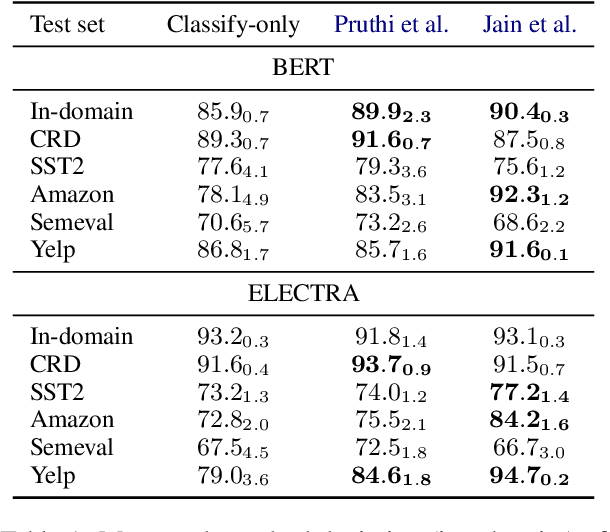

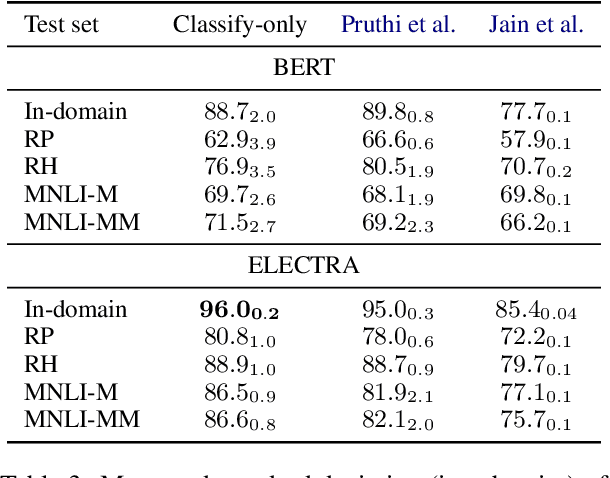

Abstract:In attempts to develop sample-efficient algorithms, researcher have explored myriad mechanisms for collecting and exploiting feature feedback, auxiliary annotations provided for training (but not test) instances that highlight salient evidence. Examples include bounding boxes around objects and salient spans in text. Despite its intuitive appeal, feature feedback has not delivered significant gains in practical problems as assessed on iid holdout sets. However, recent works on counterfactually augmented data suggest an alternative benefit of supplemental annotations: lessening sensitivity to spurious patterns and consequently delivering gains in out-of-domain evaluations. Inspired by these findings, we hypothesize that while the numerous existing methods for incorporating feature feedback have delivered negligible in-sample gains, they may nevertheless generalize better out-of-domain. In experiments addressing sentiment analysis, we show that feature feedback methods perform significantly better on various natural out-of-domain datasets even absent differences on in-domain evaluation. By contrast, on natural language inference tasks, performance remains comparable. Finally, we compare those tasks where feature feedback does (and does not) help.
 Add to Chrome
Add to Chrome Add to Firefox
Add to Firefox Add to Edge
Add to Edge